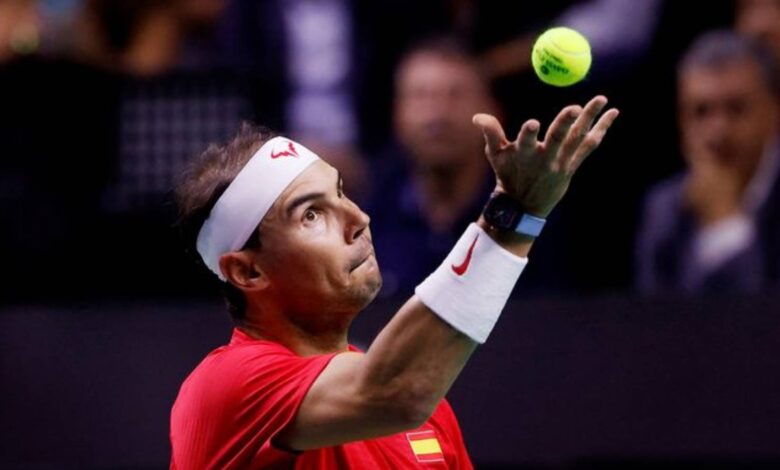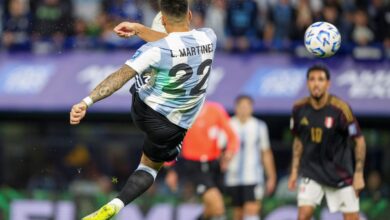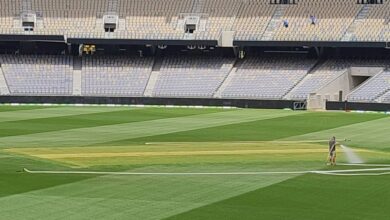Why the stereotypes associated with Rafael Nadal are not exactly what they seem | Tennis News

It is frivolous to use imagery of war to describe elite sport. The idea that multi-millionaire athletes who knock around a ball for a few hours have anything to do with the tragedy of the battlefield, especially in today’s times, is a ridiculous stretch.Yet, over the 20-odd years Rafael Nadal has spent atop the tennis world, that comparison has become so commonplace that while using it today, one risks slipping into cliche.
Veteran tennis writer Chropher Clarey is working on a book on Nadal titled ‘The Warrior.’ Maria Sharapova described him as the ‘ultimate fighter.’ In his famous New York Times essay, titled ‘Federer as a religious experience’, David Foster Wallace called Nadal “mesomorphic” and “totally martian”: a “man’s man.”
Wallace delved deeper into why Nadal was categorised so; how men find it easy to use the binaries of the “symbology of war” to profess their love for sport, or anything, before himself raving about how Nadal “beat the absolute sh*t” out of Andre Agassi at Wimbledon in 2006 and describing the preview to the final between Federer and Nadal as “king vs regicide.”
At any rate, from his first arrival on to the tour as a clay special to his last moments at this week’s Davis Cup, Nadal has carried that stereotype: small-town Iberian simpleton with a never-say-die attitude and warrior-like game.
Rafa forever ❤️💛#DavisCup #Rafa #GraciasRafa pic.twitter.com/mX6OL2omzS
— Davis Cup (@DavisCup) November 19, 2024
The 38-year-old 22-time Major winner officially called time on his career early on Wednesday. In the most routine fashion, Nadal was defeated Dutchman Botic van de Zandschulp 6-4, 6-4 in his Davis Cup opener before Spain lost the tie to the Netherlands 2-1, bringing his career to a full stop.
In reality, Nadal’s career at the top echelons of men’s tennis ended quite some time ago. The two and a half years since he won his last major, at the French Open in 2022, have seen him attempt various injury comebacks that never materialised.
Contradictions within the same stereotypes
In charting his legacy, an acknowledgement must be made of the contradictions within the same stereotypes that have created his legend.
The many attributes that have endured him to the public – grit and determination, courage and resilience, humility and modesty – are not as single-minded as they seem.
The famed humility that Nadal showed was a true manifestation of his own self-belief. Nadal knew he could extract more from his talent and achieve even greater heights than his already celestial success. True confidence is also born out of doubt.
Few have been able to replicate the purity of Nadal’s ball-striking and the angles he found on the court, any court. (AP Photo)
The bravery, and obsessive fight, were also a manifestation of his fears, of not being able to play and win for as long as he desired, and a certain desperation, to hold on to his peak level of performance and success for as long as he possibly could.
The physical resilience was a product of his own fragility. The central, most impactful injury of Nadal’s career was the diagnosis of his chronic foot issue, which flared up before he even won his first Major. In a way, he has always played in pain because it is the only way he has known how.
The famous relentless fighter, who won the French Open in 2022 taking pain-numbing injections for his foot, is, as he reveals in his autobiography, afraid of the dark, and of dogs.
For all the bravado and hypermasculinity that he allegedly elicits on the court, Nadal is infamously timid in front of a microphone or at public appearances, to the point that it has become something of a joke for tennis insiders. Even more so when he has been made to speak in English – Nadal seemingly has no designs to be a multilingual resident of the world; tennis has always been the thing, his thing. No wonder he has been desperate to draw this out for as long as he can.
It is these contradictions that were in play as Nadal signed off to his adoring home audience in Malaga on Wednesday. The 38-year-old is among the greatest athletes that Spain has ever produced, and has reiterated that he wishes to end his career on the court on his own terms. But it is this fact that made him a sideshow, even a liability, at his own farewell.
Before the start of the tournament, he asserted that this would not be his retirement party, he was there to do a job for his team. After his defeat on Wednesday, he himself admitted it was not the right decision to allow him to play singles. He was afforded that one last tussle on his own for a fitting farewell, but it proved detrimental for his team, in total contradiction to the ‘win-at-all-costs’ ethos that has seemingly defined his legacy.
Nadal is not merely a power-baseline, ball-bashing clay courter – he had generational shotmaking talent; few have been able to replicate the purity of his ball-striking and the angles he found on the court, any court. In the same way, he is not merely a bullfighting warrior.
Perhaps as he has desperately tried to hang on in his thirties, as the bulging biceps and long mane have made way for wrinkles and a receding hairline, the softer side of his personality, his fallibility, has emerged. In expressing his doubts and fears, he has shown an ocean of courage; just not in the way that is stereotypically associated with him.
In this golden generation of tennis, Nadal will neither go down as its most universally admired, nor most successful. Federer and Djokovic, respectively, have beaten him to that. But with his unique blend of kindness and bravado, and humility and passion, he has endeared himself into the hearts of people in his own way. His absence will weigh just as heavily on this sport as it weighs on him.







